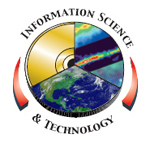
Please Note: The content on this page is not maintained after the colloquium event is completed. As such, some links may no longer be functional.
Dr. Erick Malaret
Four Scientific Disciplines, Many Missions, One Architecture - Meeting Current and Future Science Needs through Technology Infusion and Re-use
Wednesday, March 21, 2007
Building 3 Auditorium - 3:30 PM
Dr. Malaret will address the Technology Infusion Working Group stated goals for future technology infusion and software Re-use. He will examine and present ACT’s single architecture, consisting of three products – WIPE™, PIPE™ and REACT - that has already demonstrated application in the Planetary, Earth Science, Astrophysics domains and has equal application in the Heliophysics world. As demonstration of its broad application, that same architecture has been adopted for use by NOAA NESDIS, the US Navy and NATO and is a core component of an ongoing NASA REASoN CAN.
In his analysis of how the ACT architecture maps to the vision of the future, he will consider his core architecture capabilities as they relate to each of ten visionary capabilities for future technologies with specific emphasis on Interactive Data Analysis, Seamless Data Access, Scalable Analysis Portals, and Evolvable Technical Infrastructure. In other instances, the architecture may be an enabling technology that, when combined with other capabilities, produces the desired functionality.
Dr. Malaret will also discuss software re-use in terms of the importance of establishing a mechanism within NASA for identifying and spreading the word on capabilities applicable across scientific disciplines, thereby helping the community reach its envisioned goals faster and more cost effectively.
Since founding Applied Coherent Technology in 1998, Erick’s philosophy in software architecture development and services has been to respond to the needs of space and Earth environmental research and operational communities.
Organizationally, Erick has close ties to three influential communities and it is these three communities that primarily influence the direction of ACT and its products and services. They are: NASA (generally space-mission oriented through JPL, APL or a University); NOAA (primarily NESDIS, National Ice Center and more recently via NASA Cooperative Agreement, NOAA CoastWatch); and the US Navy (through the Naval Center for Space Technology, Naval Oceanographic Office, and Navy Research Laboratory for operational decision support tools based on environmental parameters for naval operations).
NASA missions, including CLEMENTINE, DeepImpact, MESSENGER, MRO/CRISM, and STARDUST, have all benefited from Erick’s science expertise and core software architecture – WIPE™, PIPE™ and REACT.
Erick received NASA’s prestigious NASA EXCEPTIONAL SCIENTIFIC ACHIEVEMENT AWARD for his work in CLEMENTINE.
Dr. Malaret earned a Ph.D. in Electrical Engineering from Purdue University, An M.S. in Electrical Engineering from Purdue and a B.S. in Physics from the University of Puerto Rico
He brings over 25 years of related experience to the Space and Earth Science communities.
IS &T Colloquium Committee Host: Karen L. Moe
